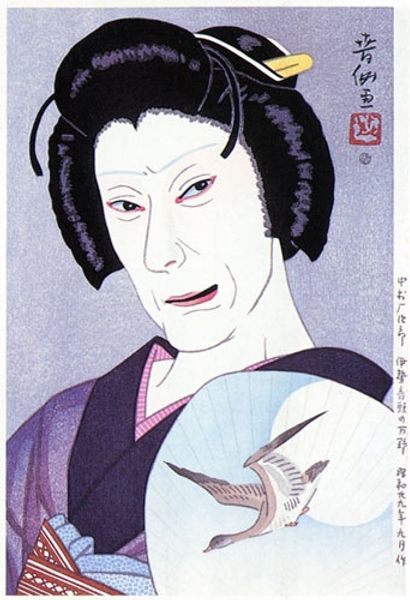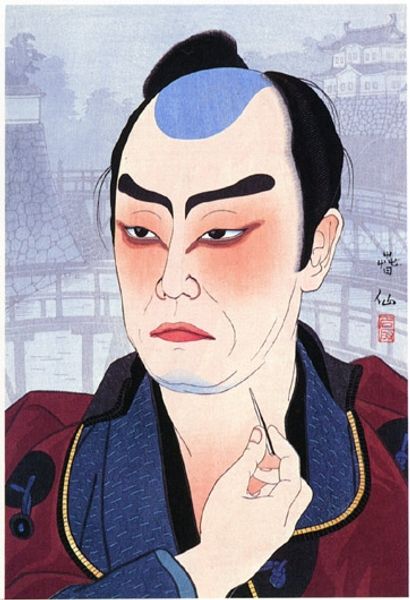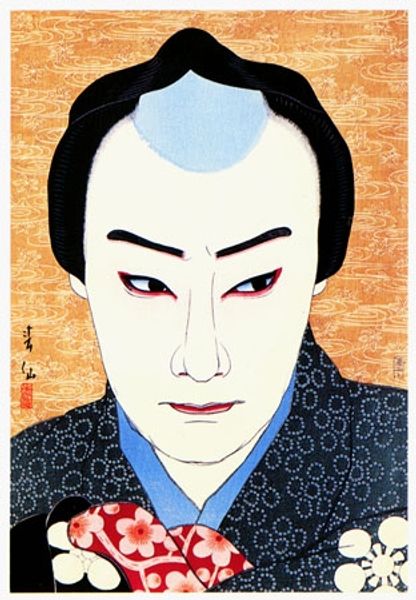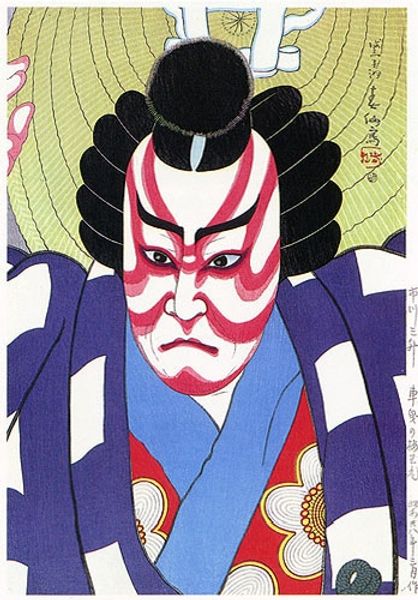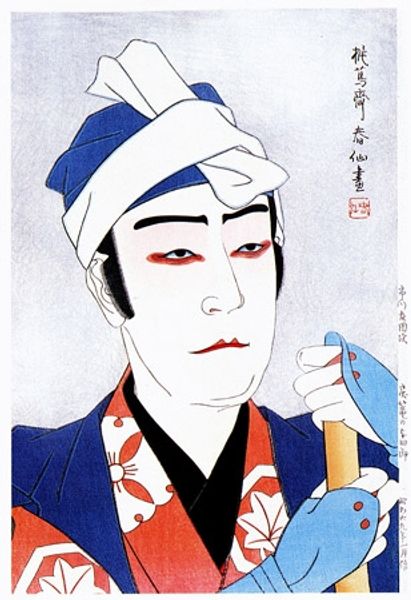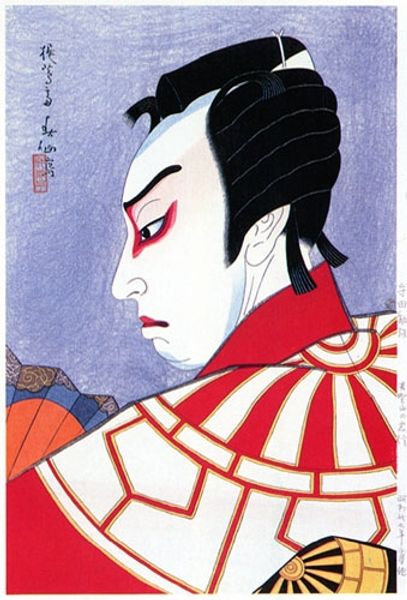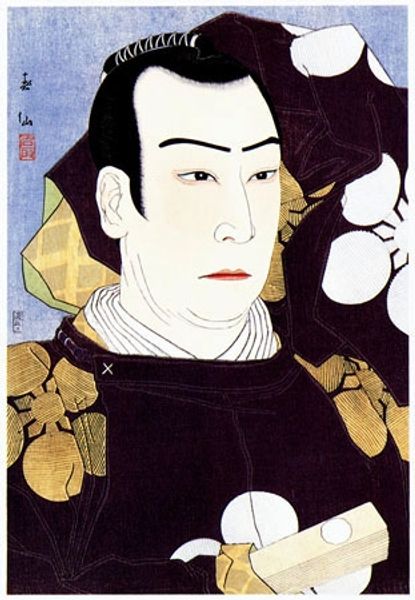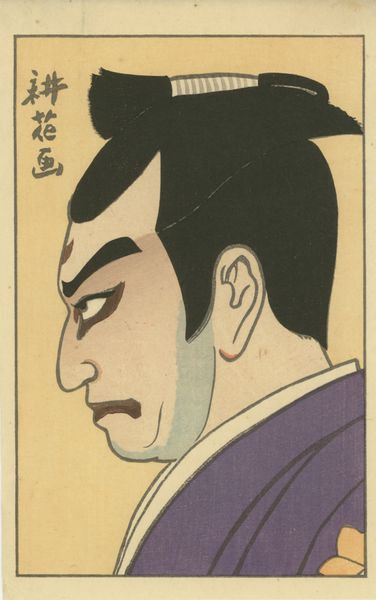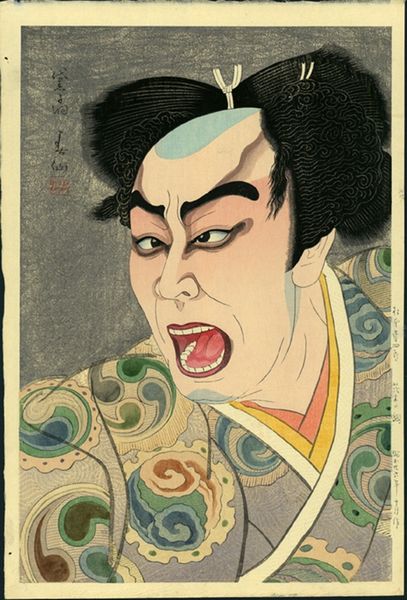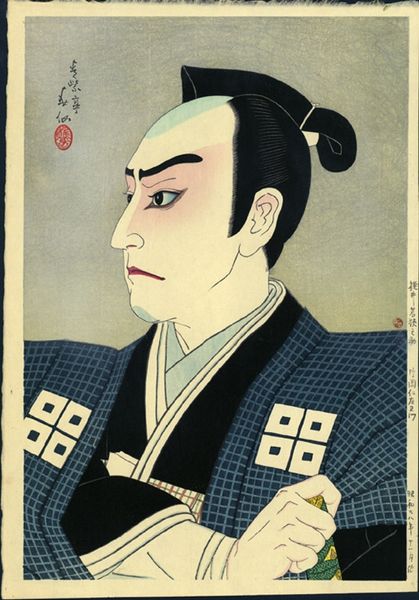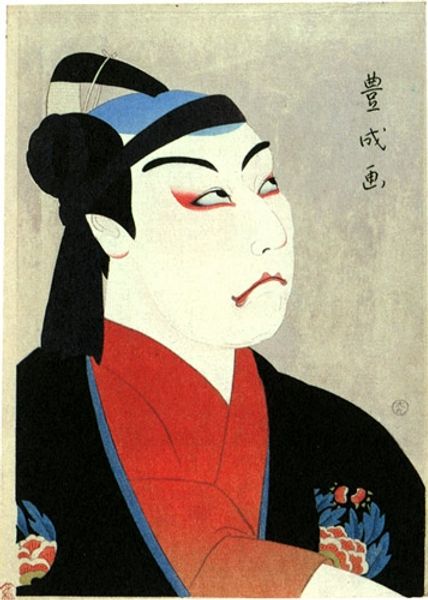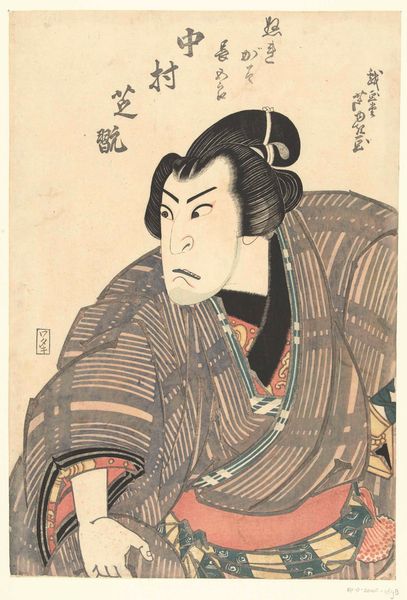
Copyright: Public domain Japan
Editor: Here we have Natori Shunsen’s 1951 woodblock print, *Ichikawa Ebizo as Hayano Kanpei in Chushingura*. The expression is so striking, like a mask barely hiding something turbulent. What do you make of this? Curator: Oh, yes, this print, it whispers of secrets, doesn't it? Look at the flatness, that almost cartoonish exaggeration of the face – the dark smudges under the eyes, the downturned mouth. It's a caricature, certainly, but more than that, it’s a distilled emotion, a heavy sadness rendered in line and color. Almost like… like watching a friend try to put on a brave face when you know their heart is breaking. Have you ever felt that weight of unspoken sorrow, just radiating from someone? Editor: Definitely, I think we all have. It’s so subtle yet potent. It is the *ukiyo-e* style, but it looks rather modern for its genre. Curator: Good observation. *Ukiyo-e*, the “floating world.” Typically, it’s about beauty and pleasure, geishas and landscapes…but here, it's as if Shunsen has used the traditional form to hold a mirror to something darker, more real. This portrait manages to blend traditional ukiyo-e styles with a raw honesty that is more commonly found in modern works. Do you find a similar contrast here? Editor: Now that you point it out, it looks intentional: almost as though the artist sought to contrast sorrow and stoicism in a single print. Curator: Indeed. It’s that very tension that makes it so compelling, don’t you think? The actor is portraying someone else. Editor: I do. Thinking about it that way makes the sadness seem both universal and extremely specific. Curator: Exactly.
Comments
No comments
Be the first to comment and join the conversation on the ultimate creative platform.
